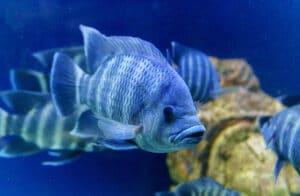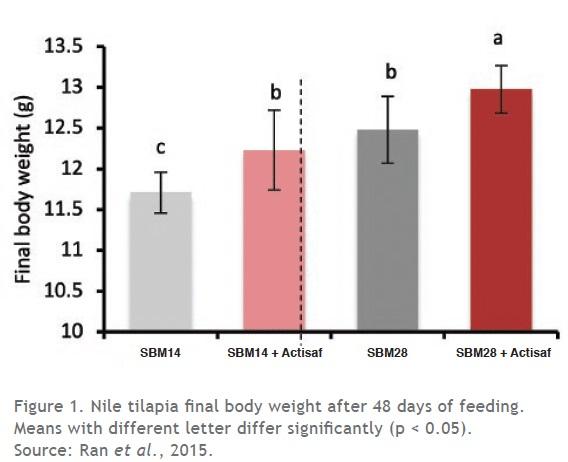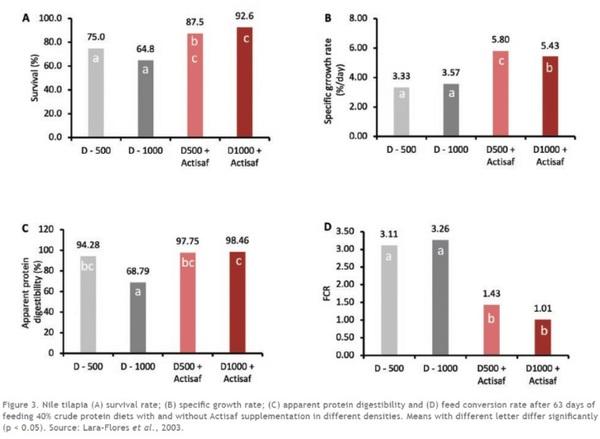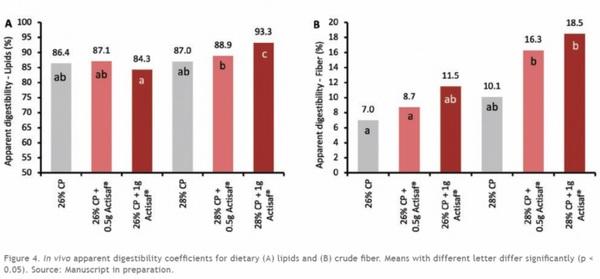Yeast probiotics to boost fish gut health and improve feed efficiency
Published: December 15, 2021
By: Phileo by Lesaffre

Gut health results from interactions of host-specific intrinsic characteristics with several factors such as environment microbiome, nutritional status, feed quality, biotic and abiotic stress. Disturbances can be hard to predict and are observed as an acute occurrence or generated after long exposure to a single or a combination of stress factors.
Aquatic animals under farming conditions are constantly being exposed to stressors, with the risk to have gut health disrupted by dysbiosis caused by pathogenic bacteria, parasites, mucosa inflammatory process and impaired gut function induced by antinutritional factors, stress due to low water quality, pollutants, etc.
In aquaculture, yeast postbiotics rich in bioactive compounds such as mannooligosaccharides, beta-glucans and nucleotides were subject of intense research in the past few decades, with a well-documented mode of action and benefits, especially targeting to improve innate immunity and increase disease resistance. On the other hand, feed supplementation with live yeast as a probiotic and its benefits on gut health has received less attention and remains an area with great potential to be furthered explored.
Yeast as a probiotic
Saccharomyces yeast is commonly found in marine and freshwater aquaculture environments in water, soil, plants, animals, or microorganisms. They can play different roles supporting aquatic environmental balance such as reducing ammonia, removal of toxic elements such as heavy metals, reduction of phenolic compounds and integrating the food chain serving as food to invertebrates and zooplankton. The yeast Saccharomyces cerevisiae is a singlecell eucaryotic fungi widely used as a probiotic supplement to improve gut health and microbiota balance in both human and livestock. Potential interest for farmed aquatic animals relies on the ability of yeast to produce and secrete enzymes, nutrients and bioactive compounds that benefit the host and the beneficial bacteria in the gut. Its also relies on its ability to neutralize harmful toxins and produce antimicrobial substances to promote in the gut mechanisms of competitive exclusion with pathogens and stimulate innate immunity and enzymes of the antioxidant system.
Benefits in Nile tilapia
Ran et al. (2015) evaluated the effect of the supplementation of a commercial yeast probiotic Actisaf® Sc 47 (Saccharomyces cerevisiae, Lesaffre proprietary strain NCYC Sc 47/ CNCM I-4407) on tilapia fingerings with 0.7 g of body weight fed for 48 days on diet SBM14 (with inclusion of 14% of soybean meal (SBM), 28% rapeseed meal (RSM) and 10% of fishmeal (FM)) and diet SBM28 (with 28% of SBM, 20% RSM and 5% of FM).
Both diets were supplemented with 1 g/kg of Actisaf® Sc 47 top coated in the feed (diets SBM14 + Actisaf and SBM28 + Actisaf). Results indicated significant differences generated by the different formulas, where diet SBM28 outperformed diet SBM14. Yeast probiotic supplementation significantly improved microvilli length and density in the midgut, weight gain and final body weight in both diets (Fig. 1). Overall FCR was improved from 1.56 to 1.44 with yeast supplementation. Additionally, yeast probiotics promoted a significant increase in the abundance of the genus Lactococcus sp. in the allochthonous microbiota, and downregulated significantly the expression of stress related and inflammatory cytokines in the gut mucosa (hsp70: involved in protein folding, indicator of ER stress; il1β: proinflammatory cytokine; tgfβ: anti-inflammatory (Fig. 2)).
In a second trial, Ran et al. (2016) evaluated the impact of Actisaf® Sc 47 feed supplementation during 56 days on Nile tilapia fingerlings (9.8 g body weight) performance in high density (436 fish/m3) compared to a control condition (218 fish/m3). The higher density significantly reduced zootechnical performance and impacted negatively the gut morphology of the nonsupplemented group. Yeast probiotic supplementation generated positive improvements such as significant improvement of intestinal microvilli length, reduced hsp70 gene expression in the intestine compared to the high-density group, increased trypsin activity compared to both groups and reduced activity of gut alkaline phosphatase 24 h post-challenge by Aeromonas hydrophila. These results help to further elucidate the significant improvements on zootechnical performance and protein digestibility previously observed by Lara-Flores et al. (2003), who observed significant improvements supplementing Actisaf® Sc 47 (1 g/kg) on Nile tilapia fingerlings (0.15 g) reared at different densities (500 and 1,000 fish/m3) for 63 days (Fig. 3).
Benefits in rainbow trout
Sheikhzadeh et al. (2015) observed benefits supplementing Actisaf® Sc 47 (1g/kg) on the rainbow trout Oncorhynchus mykiss (12 g body weight) feeds for 60 days. Results demonstrated significant improvement of final body weight and improved innate immune parameters starting after 30 days of feeding. Serum activity of lysozyme and alternative complement system were improved, and total immunoglobulin count increased compared to the control group.
Fish were subsequently challenged with pathogenic Yersinia ruckeri (BCCM/LMG 3279) via intraperitoneal injection. The yeast probiotic supplementation delayed mortality evolution in the first day’s post-challenge, reaching at day 7 mortality of 30% compared to more than 50% in the control group.
Farzad & Kuhn (2020) evaluated the inclusion of Actisaf® Sc 47 supplementation (3 g/kg) in juvenile rainbow trout (52.4 g) diets for 56 days with or without association with yeast postbiotics. Authors reported a positive trend to decrease feed conversion ratio by 20% and improvement on the activity of antioxidant enzymes such as superoxide dismutase.
Benefits in pangasius
A recent trial conducted in Can Tho University (manuscript in preparation) evaluated Actisaf® Sc 47 supplementation (0.5 and 1 g/kg) on striped catfish Pangasianodon hypophthalmus (36.4g) diets with 26% and 28% of crude protein for 56 days. No significant differences were observed in survival. An overall trend to achieve higher growth, final body weight, and improved feed conversion rate were observed in animals fed on 28% CP diet. The best FCR and protein efficiency ratio was achieved in the group fed on the 28% CP diet and supplemented with 0.5 g/kg of Actisaf® Sc 47. No clear effect on protein and dry matter in vivo apparent digestibility was observed. Actisaf significantly improved fiber digestibility at 1 g/kg inclusion in both diets, and lipid apparent digestibility on 28% CP diets (Fig. 4). Microvilli height of supplemented groups was also significantly higher compared to respective control groups. The best gut structure was achieved by supplementing both diets with 1 g/kg, or 0.5 g/kg in the 28% CP diet (Table 1).

Conclusion
Yeast probiotic Actisaf® Sc 47 is a sustainable and effective tool to improve gut health management and performance in aquaculture. Its unique characteristics can bring valuable functionalities to the feed, with potential to complement and creating synergies with other solutions. Further studies to better elucidate benefits and its impact on fish welfare and sustainability key indicators would be of high interest to the industry.
Ongoing advances in production processes and yeast probiotic physical characteristics are expected to facilitate industrial-scale adoption of yeast probiotics in aquafeeds.
Related topics:
Recommend
Comment
Share

Would you like to discuss another topic? Create a new post to engage with experts in the community.
Featured users in Aquaculture

Chris Beattie
MSD - Merck Animal Health
Global Head of Aquaculture at Merck Animal Health
United States
United States








